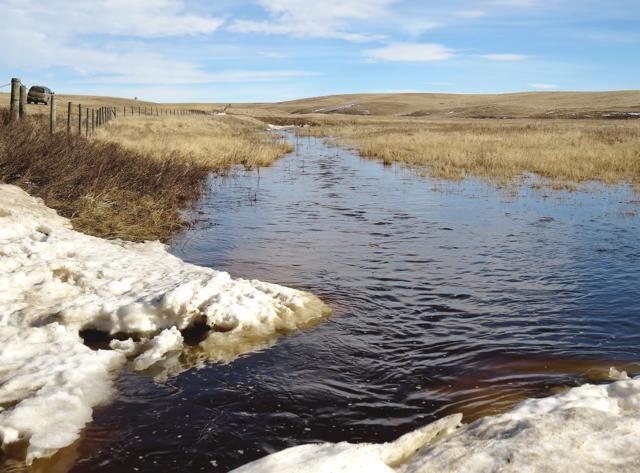Assiniboia and district have been enjoying unseasonably warm weather in February with highs above zero and reaching above 10 Celsius. By the third week of February most of the snow coverage on fields in the southwest has disappeared, lake ice has melted and water is running through fields as if it is April. This warm trend has come on the tail of extreme cold temperatures in late January. While no one is complaining, extreme weather change can take a toll on crops in the field.
Brent Flaten, integrated pest management crop specialist for Saskatchewan Agriculture, discussed the impact of extreme temperature change on crops and cropland. Flaten said that crops like winter wheat and fall rye seeded in the fall are quite hardy and should remain dormant until spring. But conditions are ripe for winterkill with abnormally warm weather, followed by a cold snap into the minus 30s and then more warming. “Crops will lose their dormancy without the snow cover.” With practically no snow cover left in southwest Saskatchewan, this could be an issue for crops if temperatures plunge to extreme cold in the future.
A new insect threat to the region is the growing problem of the pea leaf weevil which has now spread to the region from southeast Alberta.
Another issue involves soil moisture and winter run off. The fall of 2016 was wet and extreme temperatures may add to the moisture levels. At present, fields in the southwest area have been observed to have almost no coverage of snow, just build up in the valleys. There is also run off observed in some fields now. At the same time, the ground is frozen and there is still much of the winter season left to get through.




